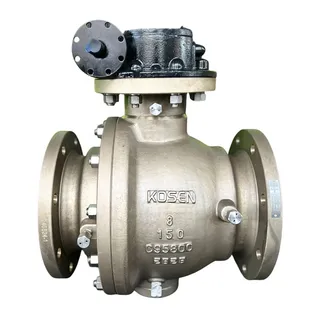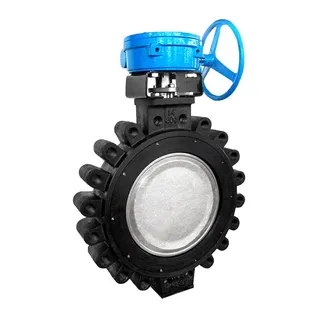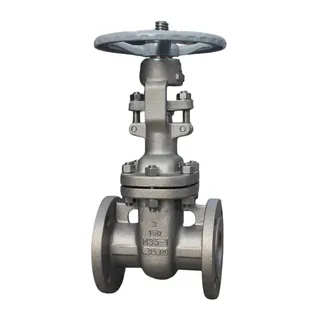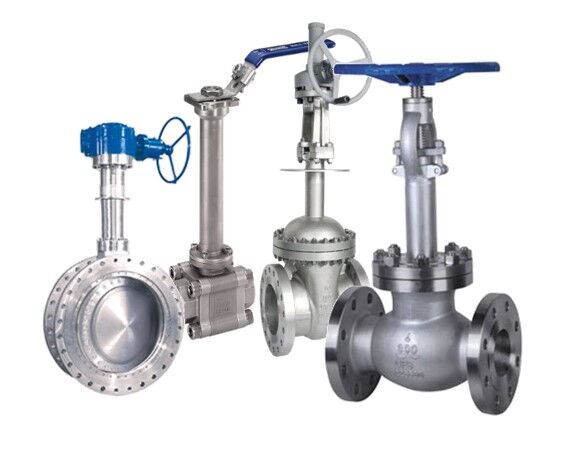
Cryogenic valves are essential components in industries handling fluids at extremely low temperatures, such as LNG, liquid nitrogen, liquid oxygen, and liquid hydrogen. These valves are critical for ensuring precise flow control and safety in sectors like energy, aerospace, and chemical processing. Designed to withstand temperatures as low as -196°C, cryogenic valves must address challenges like material brittleness, sealing integrity, and resistance to frost. Their design includes specialized materials, sealing mechanisms, and anti-frost features to ensure reliable operation. This article discusses the design, material selection, types, and applications of cryogenic valves, emphasizing their role in maintaining operational efficiency and safety in cryogenic systems.
Cryogenic valves are essential components used in various industries that require precise control and regulation of fluids at extremely low temperatures. These valves are critical for managing cryogenic fluids such as liquefied natural gas (LNG), liquid nitrogen, liquid oxygen, and liquid hydrogen, which are used in industries such as energy, aerospace, and chemical processing. The design of cryogenic valves must ensure their reliable operation in extreme cold, maintaining sealing integrity and flow control while providing resistance to brittleness and shock. In this article, we will explore the design, applications, materials, safety considerations, testing, and performance characteristics of cryogenic valves.
Cryogenic valves are designed to operate in highly challenging environments where the effects of extreme cold significantly influence the materials and structure of the valve. These valves must be able to withstand the stresses and limitations imposed by the extremely low temperatures involved.
Cryogenic valves are specifically designed to function in environments where temperatures can dip below -40°C. In applications such as LNG storage or liquid nitrogen pipelines, these valves often need to operate at temperatures as low as -196°C or even lower. At these cryogenic temperatures, materials used in valves experience significant shrinkage and increased brittleness. Therefore, cryogenic valve designs must account for these factors to maintain reliable function and integrity over long periods.
Sealing is one of the most crucial aspects of cryogenic valve design. Cryogenic fluids have a high coefficient of expansion, which can cause materials to deform and seal failures if not properly addressed. Cryogenic valves must ensure a reliable seal not only at ambient temperatures but also at extremely low temperatures, where seal materials may lose their elasticity and sealing capability. Therefore, cryogenic valve sealing components must be carefully engineered to prevent leakage and ensure that the valve continues to function effectively at cryogenic temperatures.
Material selection plays a crucial role in the design of cryogenic valves. Standard materials such as carbon steel are not ideal for cryogenic applications due to their tendency to become brittle at low temperatures. For this reason, materials like austenitic stainless steel, cryogenic carbon steel, and alloy steels are commonly used. These materials offer better low-temperature strength and toughness, making them suitable for cryogenic environments. Additionally, cryogenic valves may incorporate specialized alloys or materials like bronze or copper-based alloys to further improve durability and performance.
Cryogenic fluids can cause frost or ice formation on valve components, particularly in the packing and sealing areas. This frosting can interfere with the valve's ability to seal properly and can also cause operational failure. To mitigate this, cryogenic valves often incorporate features such as extended necks or valve stems to keep the packing and sealing components warm, thus preventing freezing. Anti-frost and anti-freeze measures are also integrated into the design, ensuring that the valve continues to operate reliably, even in the presence of extremely cold fluids.
Cryogenic valves come in various designs, each suited to specific applications. Common types of cryogenic valves include globe valves, gate valves, ball valves, and butterfly valves. Each type of valve is selected based on its functionality and the requirements of the cryogenic system in which it is installed.
Globe valves are commonly used in cryogenic applications, particularly when precise control of flow is required. These valves use a vertically moving plug to seal against the seat, effectively regulating fluid flow. Cryogenic globe valves are ideal for use in LNG systems, liquid nitrogen, and other cryogenic systems where accurate flow control is critical. The sealing capabilities of globe valves make them suitable for cryogenic applications that demand high reliability and precision.
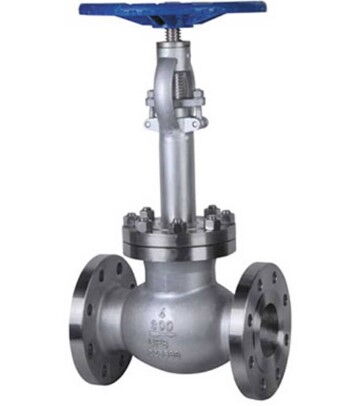
Gate valves are primarily used for fully opening or closing the flow of fluid in pipelines. They are commonly found in cryogenic systems where flow must be entirely blocked or allowed. Gate valves are designed for simple, reliable operation, and while they are typically used in larger diameter pipelines, special considerations must be made for their operation at cryogenic temperatures. They require a larger force to open or close, and this can make operation challenging in extreme low-temperature environments.
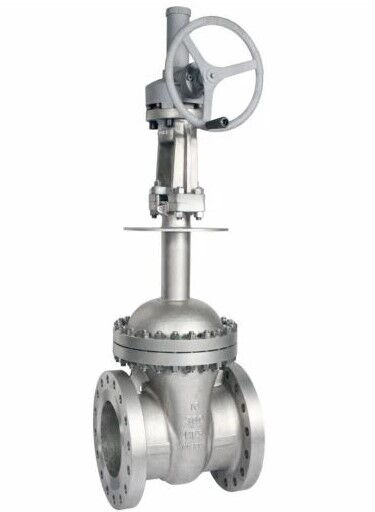
Ball valves are known for their fast, reliable open/close operation, which is particularly important in cryogenic systems that require quick shut-off. These valves are ideal for cryogenic fluids like LNG, liquid nitrogen, and oxygen. Ball valves can regulate flow quickly and effectively, making them crucial for cryogenic systems where speed and precision are necessary for safety and efficiency. The ability of ball valves to provide tight shut-off and minimal flow resistance makes them a popular choice in cryogenic fluid control.
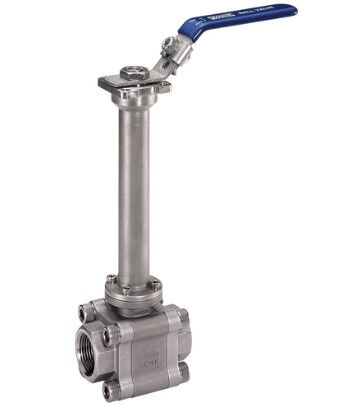
Butterfly valves are compact, lightweight, and offer efficient flow control with minimal pressure drop. They are well-suited for cryogenic applications where space and weight constraints are a concern, such as in spacecraft systems, cryogenic fuel handling, or industrial gas applications. These valves offer high flow control performance with reduced actuation force, making them ideal for cryogenic systems that need a lightweight and efficient solution.
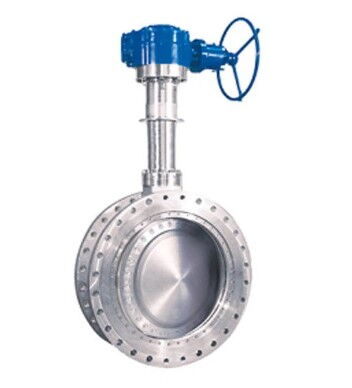
Designing a cryogenic valve requires careful consideration of various factors that impact its performance under low-temperature conditions. The key design elements for cryogenic valves include the structure, sealing mechanism, temperature control features, and corrosion resistance.
The structural design of cryogenic valves is focused on ensuring their ability to perform reliably in low-temperature conditions. Common design features include extended valve necks, which keep the packing and stem area at a higher, more manageable temperature, thereby reducing the risk of freezing. The valve body itself must be designed to resist the impact of thermal stresses that can arise from rapid temperature changes.
In cryogenic valves, sealing is critical to prevent leakage and ensure smooth operation. At low temperatures, materials like elastomers or PTFE can become rigid and lose their sealing properties. As a result, cryogenic valves incorporate specialized sealing materials such as metallic seals or high-performance elastomers designed to maintain flexibility at extremely low temperatures. These seals help preserve the valve's integrity and functionality in cryogenic environments.
Cryogenic valves must be designed to control the temperature of the valve components to prevent freezing or condensation. Insulating materials are often used on the valve body and stem to reduce the transfer of cold temperatures to sensitive parts like the packing and actuator. In certain high-performance applications, electric heating elements may be installed to ensure that the valve remains within operational temperature limits, preventing the formation of ice or frost that could impair valve operation.
Cryogenic fluids often contain corrosive substances such as moisture, carbon dioxide, or sulfur, which can accelerate the corrosion of valve components. Cryogenic valves must be made from materials that offer excellent resistance to corrosion, such as stainless steel and alloy steel, or be coated with specialized anti-corrosion layers. These materials help protect the valve against the corrosive effects of cryogenic fluids and ensure long-term performance in harsh environments.
Cryogenic valves must undergo a series of stringent tests to ensure that they can function effectively at low temperatures and in cryogenic systems. Common tests include air-tightness tests at room temperature, cryogenic air-tightness tests, and low-temperature pressure resistance tests.
At room temperature, cryogenic valves undergo air-tightness testing to detect any potential leaks. The valve is pressurized and submerged in water to check for air leaks. This test helps ensure that the valve meets the required sealing standards before being exposed to cryogenic conditions.
The cryogenic air-tightness test is one of the most critical tests for cryogenic valves. The valve is cooled to the target low temperature, and its sealing ability is assessed under conditions that closely mimic those encountered during actual operations. This test ensures that the valve will maintain its sealing integrity when exposed to cryogenic fluids.
The low-temperature pressure resistance test ensures that cryogenic valves can withstand the high pressures typically encountered in cryogenic systems without failing. The valve is exposed to low temperatures and pressurized to verify its structural integrity and resistance to leaks or damage under extreme conditions.
Proper installation and maintenance are critical to ensuring the reliable performance of cryogenic valves over their operational lifespan. Cryogenic valves must be installed in strict accordance with manufacturer guidelines to prevent mechanical damage and ensure a proper seal.
Cryogenic valves should be installed with the appropriate orientation and ensuring that the valve body and actuator components are insulated properly to minimize thermal stresses. Proper sealing is vital during installation to avoid future leaks or failures in the system.
Cryogenic valves should be regularly inspected for signs of wear, corrosion, or seal degradation. In particular, the packing and sealing components should be checked periodically for leaks, as these can be more susceptible to damage in cryogenic systems. Maintenance and part replacement should be performed promptly to ensure continued reliable operation.
Cryogenic valves are vital components in managing the flow of cryogenic fluids like LNG, liquid nitrogen, and liquid oxygen. Their design, material selection, and performance capabilities must be optimized to ensure they can withstand the extreme cold temperatures and operating conditions characteristic of cryogenic systems. From sealing mechanisms to temperature control and corrosion resistance, every aspect of cryogenic valve design must be carefully considered to ensure safe, reliable, and efficient operation. As cryogenic technology advances, the role of these valves will continue to expand, with new challenges and innovations driving the ongoing development of this essential technology.

